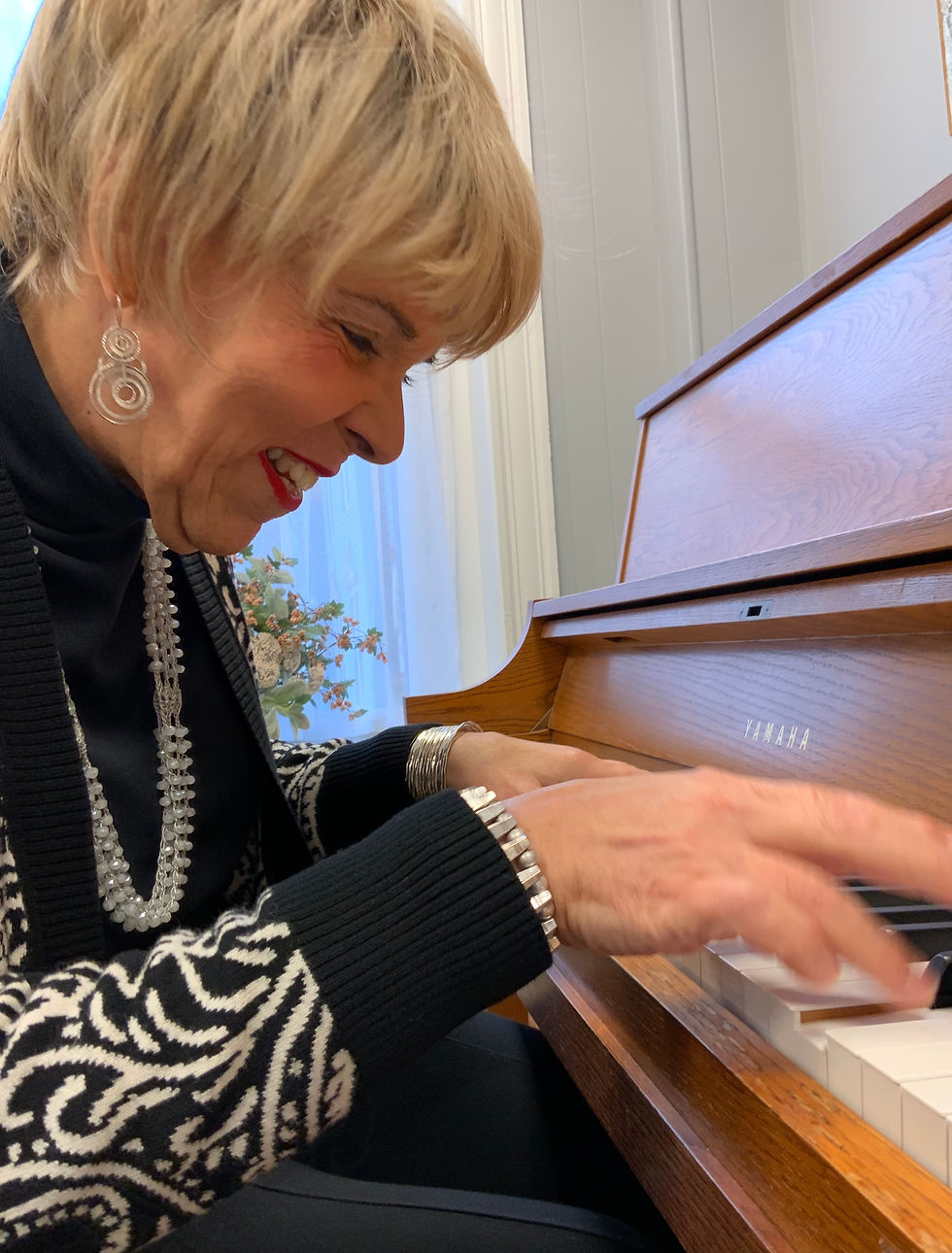How To Improve Your Timing & Rhythm
- Diana Mascari

- Oct 25, 2021
- 4 min read
Updated: Mar 24

In this article, I will show you two basic techniques that will truly make the difference in your piano playing:
Count aloud until you internalize the timing and can feel the beat.
Focus on the left hand accompaniment as the foundation while you play the right melody above it.
The First Step to Improving Your Timing and Rhythm
Why should you count aloud?
Students often tell me that they count in their head. However, their piano playing indicates otherwise. Although most of them start out with all the best intentions, counting silently gives way to concentration on playing the notes, coordinating the right hand and left hand parts and of course the normal distractions. Now you might say that you've never heard a professional pianist count in her head or even a student giving a recital performance. There is a good reason for that: counting and playing in tempo have been internalized and assimilated by these individuals.
How Should I Learn to Play While Counting Aloud?
When you are learning to play a song, start by playing each hand separately and count aloud to make sure all of the notes are played with the correct rhythm. Even though it's more challenging to verbalize the counting, you will have a much easier time keeping this going because you are conscious of your voice and connecting it with what you are playing. Do this slowly, practice challenging sections several extra times, and go on to do the same thing while playing with both hands. If you notice that you get confused, write in the counting above the notes. This really helps to reinforce exactly what note falls on each beat.
What About the Metronome?
Once you get comfortable with the counting, you can add the metronome at a slow speed to make sure that you can synchronize your playing with the clicks. The advantage of using a metronome is that you can start playing evenly at a slow speed and gradually move up the speed making sure that you are still playing in tempo and accurately. Before you know it, you will be playing with correct timing and rhythm. Does this happen overnight? Of course not, it takes practice and discipline.
The Secret to Better Timing & Rhythm: Focus on the Left Hand
With the left hand accompaniment as the solid foundation, you are free not only to play the right melody with great timing and rhythm, but also with embellishments and variations in your interpretation of the song.
In my blog article, The Key Is in the Counting, I elaborated on this subject and the advantage of using the left hand accompaniment pattern to help you play with correct timing and and a good beat (rhythm).
Rhythm: The Key to Listener Enjoyment?
Rhythm is such a critical part of communication, that we almost irresistibly seek it out, and attend to it. Though this may seem very primitive, we need to anticipate it and our focus stumbles if we notice that it's off. And it's a primary reason that a groups gathered around your piano or other instrument will listen, join it or find fault. If your timing is off your listeners will invariably get distracted or lose interest. Although they may applaud out of courtesy, their appreciation will may not reflect enjoyment.
Suppose, on the other hand, you played with a good beat, even if you make a few mistakes in the music your listeners would be feeling the rhythm and get into it. I can't tell you how many times I've played for a group and made some a few "clams". Even if I admit my goofs, my audience will tell me they did't notice anything wrong. In fact some of the best concert artists play with far less accuracy than you could imagine. I once asked one of my classical piano teachers, a concert artist herself, if she thought some of the great pianists played with about 85% accuracy. Her answer shocked me: "Even skilled masters at the keyboard can play with less than 85% accuracy." How do they get get away with it? They play with such musical flow, expression, and perfect timing that their audience is captivated by the overwhelming amount of other musical elements and nuances in the artist's interpretation of the piece.
Here's How To Use the Left Hand Accompaniment to Keep Your Rhythm & Timing Solid
One of the best ways to energize your piano playing, is to focus on the left hand accompaniment.
Wondering what to do for accompaniments for your favorite songs?

About Diana Mascari
Diana Mascari has taught piano to hundreds of adults and children for more than 45 years. She holds two Masters of Music degrees from New England Conservatory and taught keyboard harmony to music majors while pursuing doctoral studies at Boston University. She was the music director for a multi-cultural Presbyterian Church for four decades, and her jazz and classical compositions have been performed worldwide. Diana has been performing for more than 50 years. From solo jazz piano to commercial groups touring the East Coast to leading her own jazz ensembles at colleges and jazz clubs throughout New England.










Comments